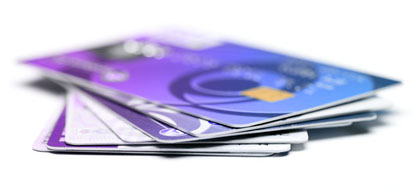
With a debit card, you can make a purchase in real-time using money in your checking or savings account. If thieves gain access to your debit card number, they can use it to make unauthorized purchases or withdraw cash. Thieves gain access to account numbers using the debit-card processing equipment of legitimate retailers. They do so by placing a “skimmer” on debit-card processing equipment, which records debit card numbers and personal identification numbers, or PINs. You can lower the risk of falling victim to this crime by implementing a number of countermeasures.
1. Review Bank Account Activity to Identify Inappropriate Charges
Debit card issuers provide a monthly statement to debit card holders so customers can review their debit-card transactions frequently. To minimize your possible liability for unauthorized card transactions, review the debit card activity on your statement and validate each entry. If you detect an inappropriate entry, contact the card issuer promptly, ask for a refund and request the company’s help in resolving the issue. If the card issuer fails to resolve the issue promptly, the Better Business Bureau might be able to offer assistance in resolving the situation. Also, if you are a victim of fraud, contact the Federal Trade Commission. But if you are a victim of Internet crime, contact the Internet Crime Complaint Center.
2. Respond to Email Only If You Initiated the Contact
Because the Internet grants a criminal anonymity, it’s difficult to determine the true origin of unsolicited emails. While unsolicited email might have been transmitted by a legitimate company, it’s also possible it was sent by a criminal. For this reason, it’s wise to delete unsolicited emails, rather than follow any instructions contained in the message, such as a request for your debit card number by return email. Instead, respond to a company email only if you initiated the contact. Even then, carefully consider the possible negative ramifications of providing anyone your debit card number or other personal information via email. It’s equally important that you refrain from clicking on any link that’s contained within an unsolicited email.
3. Disregard Website Requests for Your Debit Card Number
The lack of knowledge of many individuals regarding the workings of e-commerce make some people vulnerable to criminal actions. For example, criminals may attempt to conduct malicious activities by creating a website that appears to be that of a legitimate company. So when visiting any website, it’s important to ignore requests for personal information even if the website’s design mirrors that of a legitimate company with which you periodically conduct business. You can confirm the validity of a site by comparing the links that are provided within an email to the web address you typically use to access the company on the Internet. If the two are identical, the link provided in the email might be legitimate. But it’s best to substantiate the authenticity of any company request stated in an email by contacting the business and speaking to a company representative directly.
4. Rely on Bank Automated Teller Machines
Federal law enforcement professionals warn states that automated teller machines located at convenience stores and other businesses might pose more risk of debit card scams than do bank ATMs. Banks offer added security measures, such ad surveillance cameras that record the withdrawals from customer accounts, as well as mirrors located near ATMS that alert customers to the approach of others. “Others” include those who might try to steal ATM cards or “shoulder surf” to learn your PIN. In addition, it might be easier for criminals to go unnoticed when installing skimming devices on ATMs located in non-bank locations than in bank locations. For these reasons, it may be best to withdraw funds or make deposits at a bank.
5. Rely on Secure Connections to Transmit Personal Information
Even if you initiate a financial transaction on the Internet, transmit your debit card number and PIN only if you use a secure connection. If a connection is secure, you will see a padlock icon located in the browser window. When you click on the padlock icon, the site will display the details of its Internet security. In addition, a secure webpage address will begin with “https.”
6. Turn Off Computer if Not in Use
Some people activate a computer’s sleep mode if they will be away for an extended time period, preferring not to restart programs and reopen files later, which is required if you shut down the computer. But turning off the computer is best because doing so requires any subsequent user to enter an operating system password. Without the system password, a thief will be unable to access data stored on the computer’s hard drive, which might include banking data such as your debit card number or PIN.
Federal law does not provide the same consumer protection mechanisms against debit card crimes as those afforded to credit card crimes. So it’s important that you protect your finances by taking certain steps when using your debit card. For example, you should withdraw money from an ATM located on a bank’s premises and confirm that a website is legitimate before making an online purchase.

0 responses so far ↓
There are no comments yet...Kick things off by filling out the form below.
Leave a Comment